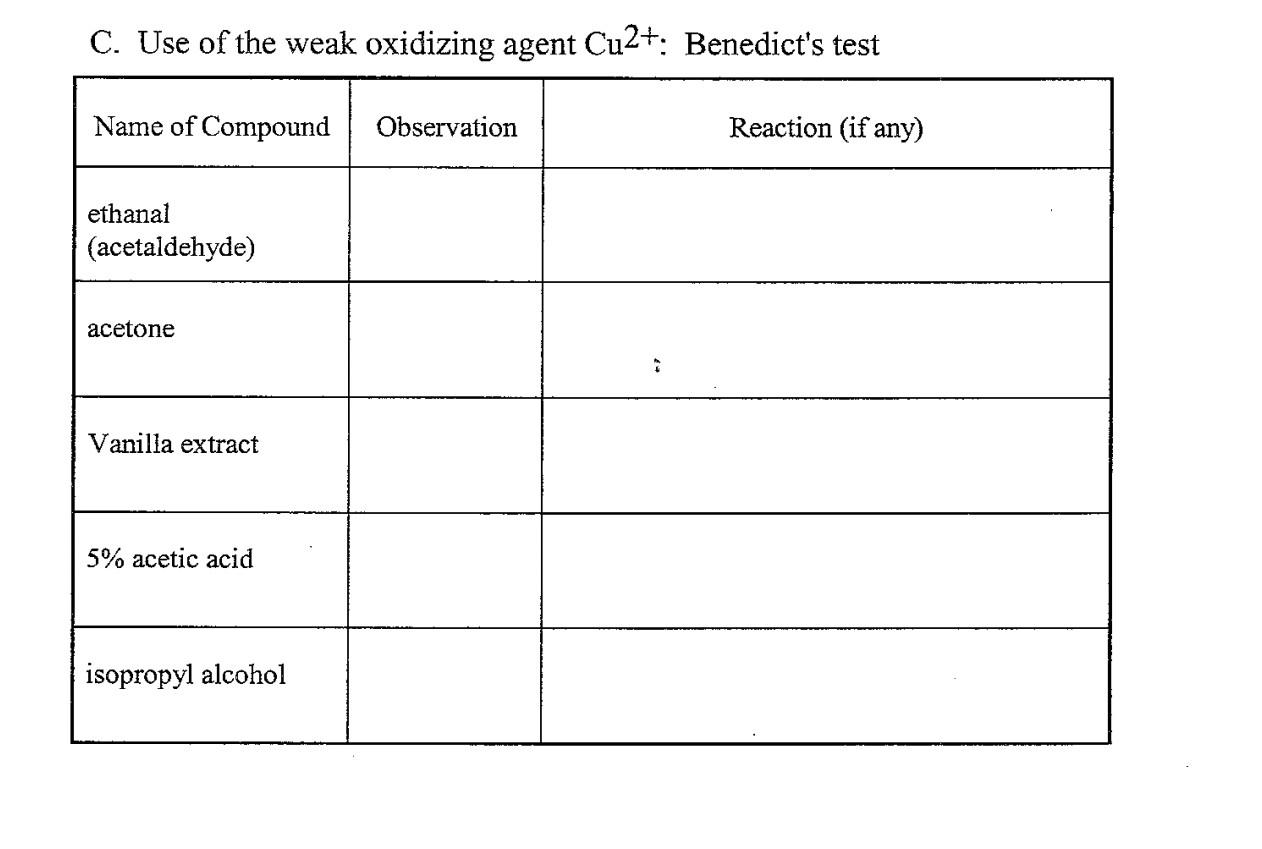Question
Use of the weak oxidizing agent Cu2+--Benedict's test Aliphatic aldehydes will react with Benedict's solution, an alkaline solution of Cu2+ and citrate ions. The unbalanced

Use of the weak oxidizing agent Cu2+--Benedict's test Aliphatic aldehydes will react with Benedict's solution, an alkaline solution of Cu2+ and citrate ions. The unbalanced reaction is shown below. Aromatic aldehydes do not react with Benedict's solution. The Cu2o precipitate may be red, yellow, or green depending on the amount of aldehyde present. This test is widely used to detect sugars, as you will see when we study +2 RCHO +. Cu --- _ RCOO + Cu 20 carbohydrates. ionized precipitate acid Add 2 ml of Benedict's solution to each of five test tubes. Then .add 4 drops of each of the following to the separate test tubes: ethanal (acetaldehyde), reagent-grade acetone, vani11a extract, 5% acetic acid, and isopropyl alcohol. Set the test tubes in a boiling water bath. Look for any changes that occur during the next 1o minutes. Record your observations. Write chemical reactions for any positive tests you observed.
C. Use of the weak oxidizing agent Cu2+: Benedict's test Name of Compound Observation Reaction (if any) ethanal (acetaldehyde) acetone Vanilla extract 5% acetic acid isopropyl alcoholStep by Step Solution
There are 3 Steps involved in it
Step: 1

Get Instant Access to Expert-Tailored Solutions
See step-by-step solutions with expert insights and AI powered tools for academic success
Step: 2

Step: 3

Ace Your Homework with AI
Get the answers you need in no time with our AI-driven, step-by-step assistance
Get Started


